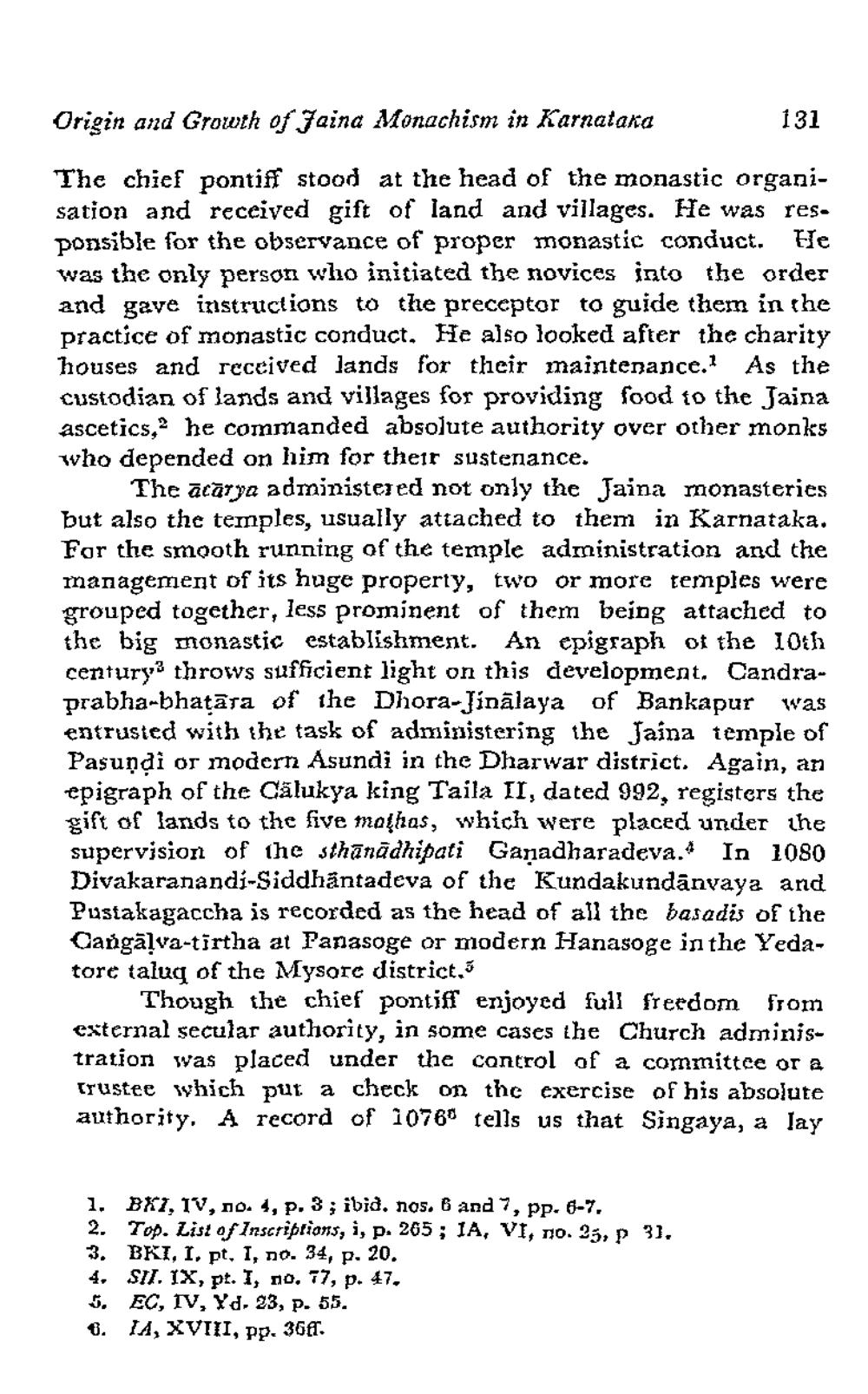________________
Origin and Growth of Jaina Monachism in Karnataka
131
The chief pontiff stood at the head of the monastic organisation and received gift of land and villages. He was res. ponsible for the observance of proper monastic conduct. He was the only person who initiated the novices into the order and gave instructions to the preceptor to guide them in the practice of monastic conduct. He also looked after the charity houses and received lands for their maintenance. As the custodian of lands and villages for providing food to the Jaina ascetics, he commanded absolute authority over other monks who depended on him for their sustenance.
The acārya administered not only the Jaina monasteries but also the temples, usually attached to them in Karnataka. For the smooth running of the temple administration and the management of its huge property, two or more temples were grouped together, less prominent of them being attached to the big nonastic establishment. An epigraph of the 10th century throws sufficient light on this development. Candra. prabha-bhatāra of the Dhora-Jinālaya of Bankapur was entrusted with the task of administering the Jaina temple of Pasundi or modern Asundi in the Dharwar district. Again, an epigraph of the Cälukya king Taila II, dated 992, registers the gift of lands to the five mathas, which were placed under the supervision of the sthanadhipati Ganadharadeva. In 1080 Divakaranandi-Siddhantadeva of the Kundakundanvaya and Pustakagaccha is recorded as the head of all the basadis of the Cangāļva-tirtha at Panasoge or modern Hanasoge in the Yedatore taluq of the Mysore district,
Though the chief pontiff enjoyed full freedom from external secular authority, in some cases the Church administration was placed under the control of a committee or a trustec which put a check on the exercise of his absolute authority. A record of 10769 tells us that Singaya, a lay
1. BX1, IV, no. 4, p. 3; ibid. nos. 6 and 7, pp. 6-7. 2. Top. List of Inscriptions, i, p. 265; IA, VI, no. 35, p 3). 3. BKI, I. pt. 1, no. 34, p. 20.
SII. IX, pt. 1, no. 77, p. 47, 5. EC, IV, Yd. 23, p. 55. 6. 11, XVIII, pp. 36T.




